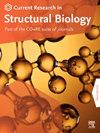The structural basis of the G protein–coupled receptor and ion channel axis
IF 2.7
Q3 BIOCHEMISTRY & MOLECULAR BIOLOGY
引用次数: 0
Abstract
Sensory neurons play an essential role in recognizing and responding to detrimental, irritating, and inflammatory stimuli from our surroundings, such as pain, itch, cough, and neurogenic inflammation. The transduction of these physiological signals is chiefly mediated by G protein-coupled receptors (GPCRs) and ion channels. The binding of ligands to GPCRs triggers a signaling cascade, recruiting G proteins or β-arrestins, which subsequently interact with ion channels (e.g., GIRK and TRP channels). This interaction leads to the sensitization and activation of these channels, initiating the neuron's protective mechanisms. This review delves into the complex interplay between GPCRs and ion channels that underpin these physiological processes, with a particular focus on the role of structural biology in enhancing our comprehension. Through unraveling the intricacies of the GPCR-ion channel axis, we aim to shed light on the sophisticated intermolecular dynamics within these pivotal membrane protein families, ultimately guiding the development of precise therapeutic interventions.

G蛋白偶联受体和离子通道轴的结构基础
感觉神经元在识别和响应来自周围环境的有害、刺激和炎症刺激(如疼痛、瘙痒、咳嗽和神经源性炎症)方面起着至关重要的作用。这些生理信号的转导主要由G蛋白偶联受体(gpcr)和离子通道介导。配体与gpcr结合触发信号级联,招募G蛋白或β-阻滞蛋白,随后与离子通道(例如,GIRK和TRP通道)相互作用。这种相互作用导致这些通道的敏化和激活,启动神经元的保护机制。这篇综述深入研究了支撑这些生理过程的gpcr和离子通道之间复杂的相互作用,特别关注结构生物学在增强我们理解方面的作用。通过揭示gpcr -离子通道轴的复杂性,我们的目标是阐明这些关键膜蛋白家族中复杂的分子间动力学,最终指导精确治疗干预的发展。
本文章由计算机程序翻译,如有差异,请以英文原文为准。
求助全文
约1分钟内获得全文
求助全文

 求助内容:
求助内容: 应助结果提醒方式:
应助结果提醒方式:


